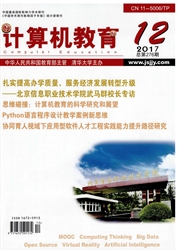

 中文摘要:
中文摘要:
这调查针对在为钢腐蚀增加氯化物阀值价值评估腐蚀禁止者的有效性。腐蚀禁止者的三种类型,钙亚硝酸根(Ca (没有 2)2), 锌氧化物(ZnO ) ,和 N, N′-dimethylaminoethanol (DMEA ) 它分别地代表了阳极的禁止者, cathodic 禁止者,和混合禁止者,被选择。实验在浸透的氢氧化钙被执行(Ca (哦) 模仿水泥的电解环境的 2) 答案。禁止者开始在不同层次被混合,然后氯化物离子逐渐地在几步被增加进答案。开电路的潜力(E corr ) 和腐蚀水流密度(我 电气化学的阻抗系列(EIS ) 决定的 corr ) 被用来识别活跃腐蚀的开始,从而决定氯化物阀值价值。尽管所有禁止者在减少是有效的,它被发现那钢加强的腐蚀率,他们在增加氯化物阀值价值上有边缘的效果。
 英文摘要:
英文摘要:
This investigation was aimed at evaluating the effectiveness of corrosion inhibitors in increasing the chloride threshold value for steel corrosion. Three types of corrosion inhibitors, calcium nitrite (Ca(NO2)2), zinc oxide (ZnO), and N,N'-dimethylaminoethanol (DMEA), which respectively represented the anodic inhibitor, cathodic inhibitor, and mixed inhibitor, were chosen. The experiment was carried out in a saturated calcium hydroxide (Ca(OH)2) solution to simulate the electrolytic environment of concrete. The inhibitors were initially mixed at different levels, and then chloride ions were gradually added into the solution in several steps. The open-circuit potential (Ecorr) and corrosion current density (lcorr) determined by electrochemical impedance spectra (EIS) were used to identify the initiation of active corrosion, thereby determining the chloride threshold value. It was found that although all the inhibitors were effective in decreasing the corrosion rate of steel reinforcement, they had a marginal effect on increasing the chloride threshold value.
 同期刊论文项目
同期刊论文项目
 同项目期刊论文
同项目期刊论文
 期刊信息
期刊信息
